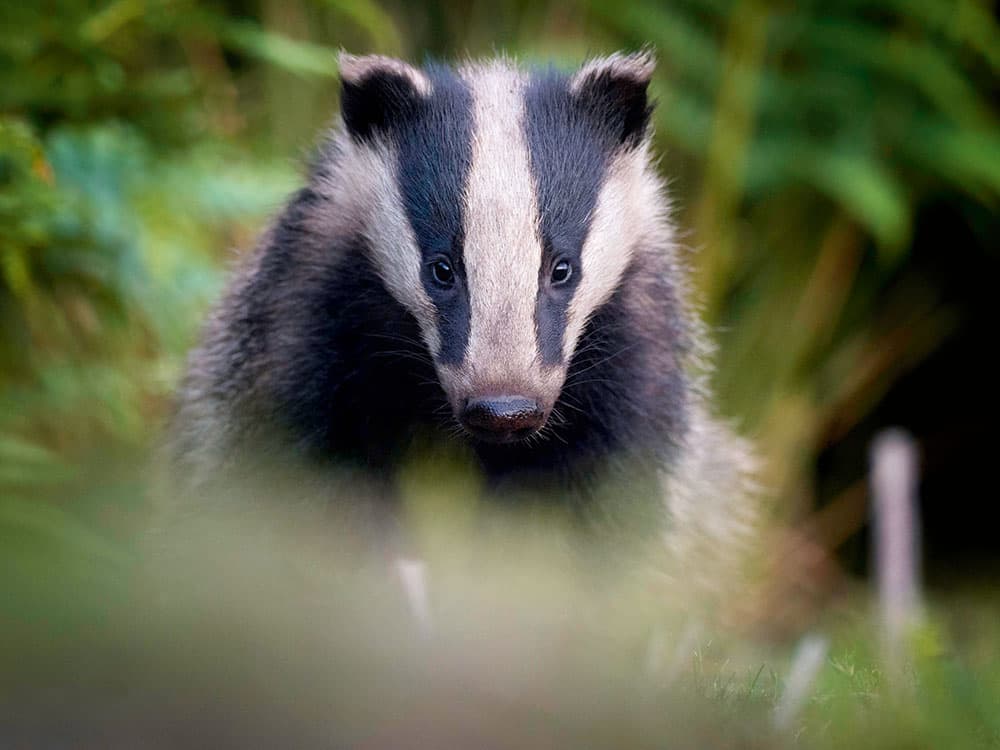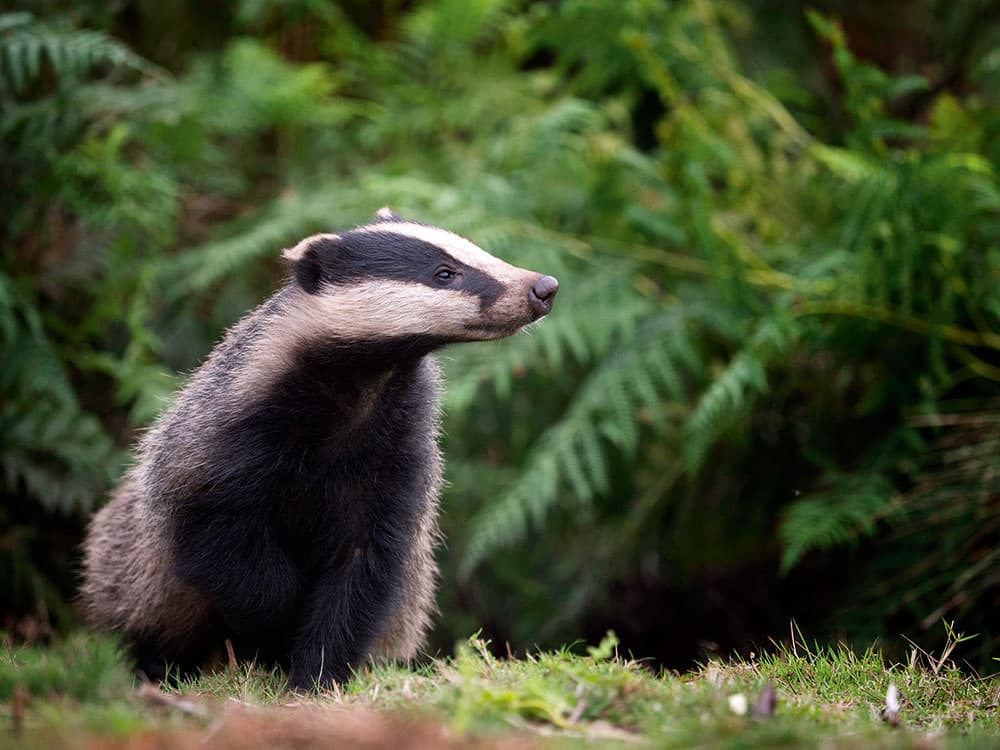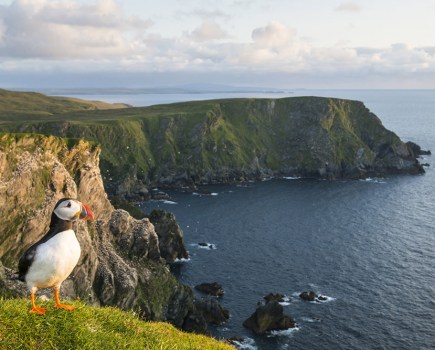Professional wildlife photographer Tesni Ward shares her low-light photography tips for photographing badgers and reflects on her career capturing nocturnal animals.
There is no denying that being a full-time wildlife photographer is no easy ride, and it took a good few months to gain momentum and start being able to support myself.
The biggest challenge was getting my name out there, and while I may not be a household name yet, I’ve found that social media and word of mouth are highly valuable. With platforms such as Instagram focused heavily on photography and images, it’s an easy way to develop a following.
It’s also important to recognise that your time cannot be focused solely on photography, as the work that goes on behind the scenes is also vital in order to be successful.

A rare moment caught as a badger sits still. Olympus OM-D E-M1 Mark II, 300mm, 1/200sec at f/4, ISO 1250, Credit: Tesni Ward
Capturing nocturnal animals – photographing badgers
Before I made the decision to become a full-time photographer, I started a short-term project photographing badgers that quickly turned into a slightly unhealthy obsession.
European badgers are highly misunderstood and can be very difficult to work with due to the fact they are nocturnal, but I was determined to photograph them in natural-light conditions. It took many months before I was even able to find a suitable location, but the real challenge began once the badgers started appearing.
Rewarding time
We know more about whales than we do about badgers, as badgers live a highly elusive life. This has made them all the more appealing to work with.
Heavily persecuted since the early 1800s, badgers still suffer greatly at the hand of man despite being afforded some of the highest levels of protection in the UK. With little reason to trust humans, it makes the time spent with them all the more rewarding.
Deep in the forest very little light reaches the ground, so despite the badgers emerging fairly early while the sun is still relatively high in the sky, this light rarely reaches the badgers. This has forced me to develop a strategy that masters the art of low-light photography.
Working in low-light photography can be more challenging with wildlife than with static subjects. You can only do so much with your shutter speed before any subject’s movement becomes an issue. The available light can also change drastically with the slightest change of an animal’s position.
Badgers do not sit still for long, as they like to snuffle around and explore their surroundings. Their coloration can also be an issue, with their contrasting black and white markings making it difficult to expose each shade correctly.
While some people opt for flash to compensate for difficult or dark conditions, I like to work with the natural light available. This leaves me with a few options on how to achieve well-exposed, usable images in such challenging low-light photography conditions.

Olympus OM-D E-M1 Mark II, 40-150mm, 1/400sec at f/2.8, ISO 800
Capturing nocturnal animals – What camera kit do I need?
Gimbal head and tripod
A sturdy tripod and gimbal head will ensure that your kit feels weightless, while allowing smooth movement and stability when needed for those slow shutter- speed shots. See our guide to the Best tripod to buy for your camera.
Fast lens
A lens capable of achieving a wide aperture such as f/2.8 will make a big difference in poor light conditions. See our guide to prime lenses vs zoom lenses. If you’d like to view our pick of the finest lenses for wildlife photography head on over to our Best lenses for wildlife photography article.

Tesni prefers to work with natural light. Canon EOS 5D Mark III, 500mm, 1/160sec at f/4, ISO 4000, Credit: Tesni Ward
Tesni’s top low-light photography tips for capturing nocturnal animals
1. Slow your shutter speed
It is important to know the limitations of your equipment beforehand. When your aperture is wide open and you have pushed your ISO to its absolute limit, the last option is to slow your shutter speed. It is possible to capture pin-sharp images at 1/60sec or less.
2. Use a tripod
While nothing can be done about the movement of your subject, minimising camera shake will certainly help when you start to push your shutter speed to its limits. Use a suitable tripod and remember to turn off your image stabiliser if it doesn’t do this automatically when on a tripod.
3. Know your subject
Knowing your chosen species intimately will allow you to anticipate its behaviour. There may be occasions when your subject will pose in a certain way or stay relatively static. Anticipating this behaviour and preparing for it will help you capture pin-sharp images despite less-than-ideal settings.
4. Focus on one species
Start a project that involves photographing just one species. It can be a great way to develop your portfolio beyond standard images. Whether it’s a specific bird, mammal or even just an area, focusing your time will stack the odds in your favour to capture unique photographs.
5. Patience is a virtue
Any wildlife photographer can attest to the fact that wildlife will push your patience to its limits. Whether it’s a few days, weeks or even months and years, it can take time to merely find the wildlife, let alone photograph it. Perseverance will see your patience rewarded.
6. Focus on animals in their environment
Always take photographs that showcase animals in their natural environment, if you can do so without disturbing their habitat. This will give you the opportunity to photograph unique behaviours and fleeting moments that give viewers a glimpse into wildlife’s hidden world.
Nocturnal animals – one that didn’t work

Low light shot of a badger that didn’t work. Credit: Tesni Ward
I often use sequential or burst mode to maximise the chance of capturing at least one successful image. The downside is many images will be destined for the bin. This image was the last in a series of shots of a badger climbing a tree. As the badger attempted its descent, the last frame captured it falling out of the tree. With the shutter speed at 1/250sec due to fading light conditions and a maxed-out ISO, it resulted in motion blur. While this image may not have been a success, fortunately the first frame in the sequence was.
Article originally published October 2017, updated January 2024.
Tesni Ward
Tesni Ward is a professional wildlife photographer based on the outskirts of the Peak District. While the majority of her work focuses on British wildlife, she also photographs projects across the world and has aspirations to promote conservation and education through her images.
Inspired by Tesni’s tips for taking better shots of shy nocturnal animals?
Wildlife photography can be wonderfully rewarding, and as Tesni’s article shows, you can get memorable images of shy nocturnal creatures without having to head off to an exotic destination.
We’ve got a lot of great content on this genre: check out our complete guide to wildlife photography, and our low-light wildlife photography tips. We’ve also got some great advice on how to be an ethical wildlife photographer, and how to get better at this genre by understanding animal behaviour.
If you’d like to attempt wildlife photography without spending a fortune on an expensive telephoto lens, our Best Budget telephoto lenses for wildlife photography is a great place to start.
Follow AP on Facebook, Twitter, Instagram, YouTube and TikTok.








